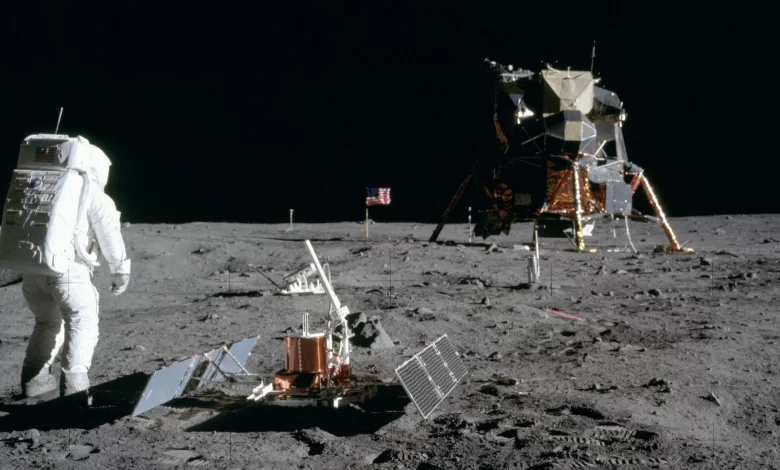The conquest of the Moon, the great return

The Moon is presented as the technical stage for Mars.” Olivier Sanguy, journalist at the Cité de l’Espace, talks about the genesis of the Artemis program, and NASA’s stated objective of sending men and women to tread the lunar soil again by the end of the decade. . With him, we draw a portrait of the Moon, a portrait whose outlines appear during the Cold War years, until this sudden stop in 1972 with the end of the Apollo program.
“Until the 2000s, there will be a neglect, a little bit of the moon, in favor of destinations like Mars in particular”, continues the journalist. Under the presidency of Barack Obama, the Contellation program, launched by his predecessor Georges W. Bush in 2004, is buried. For Barack Obama, there is no longer any interest in returning to the Moon. But NASA’s manned spaceflight program has seen a sudden boost under the presidency of Donald Trump. “It’s a very ambitious program that has a quality that, at the limit, we did not expect from Donald Trump’s side, that is to say that it is an international programexplains Olivier Sanguy. This is one of the reasons why this Artemis program survived the political alternation (…) And with the Biden administration, we added the first woman and the first person of color. We can clearly see that the lunar program, as at the time of Apollo, is still strongly tinged with politics.”
Technical, technological, but also scientific issues: the fundamental difference with the Apollo missions is that Artemis provides for a long-lasting installation and frequent return trips between the Earth and the Moon. Remember that the International Space Station (ISS) is located 400 km from the Earth, while the Moon is 400,000 km from us. “The Moon is a great unknown that we think we know, explains Olivier Sanguy. The surface of the Moon is roughly the surface of the African continent. We would not dare to say that we know the African continent because twelve people walked in Africa. So we have to explore it.”
In partnership with the Cité de l’Espace.
For Olivier Sanguy, “there’s still a lot to discover. The big storyline is that the Moon formed over 4 billion years ago. A Mars-sized object hit Earth, ripped a piece of the Earth. This piece formed the Moon, it cooled much faster. That’s the Moon. And so one of the interests of the Moon is that by studying the Moon, in fact, we study the history of the Earth. That is to say that it is not only the Moon for the Moon, it is also the Moon to better understand the Earth.”
With Olivier Emond, head of the science, health and environment department of franceinfo, this second season of the podcast “Mars, the new odyssey: the lunar stage” offers you a trip to the Moon, a sort of training center with the future epic martian. For this sound journey, a few teammates, engineers, geographer, astronauts, journalist… and a launch pad: the Cité de l’Espace in Toulouse. Ready for takeoff?












